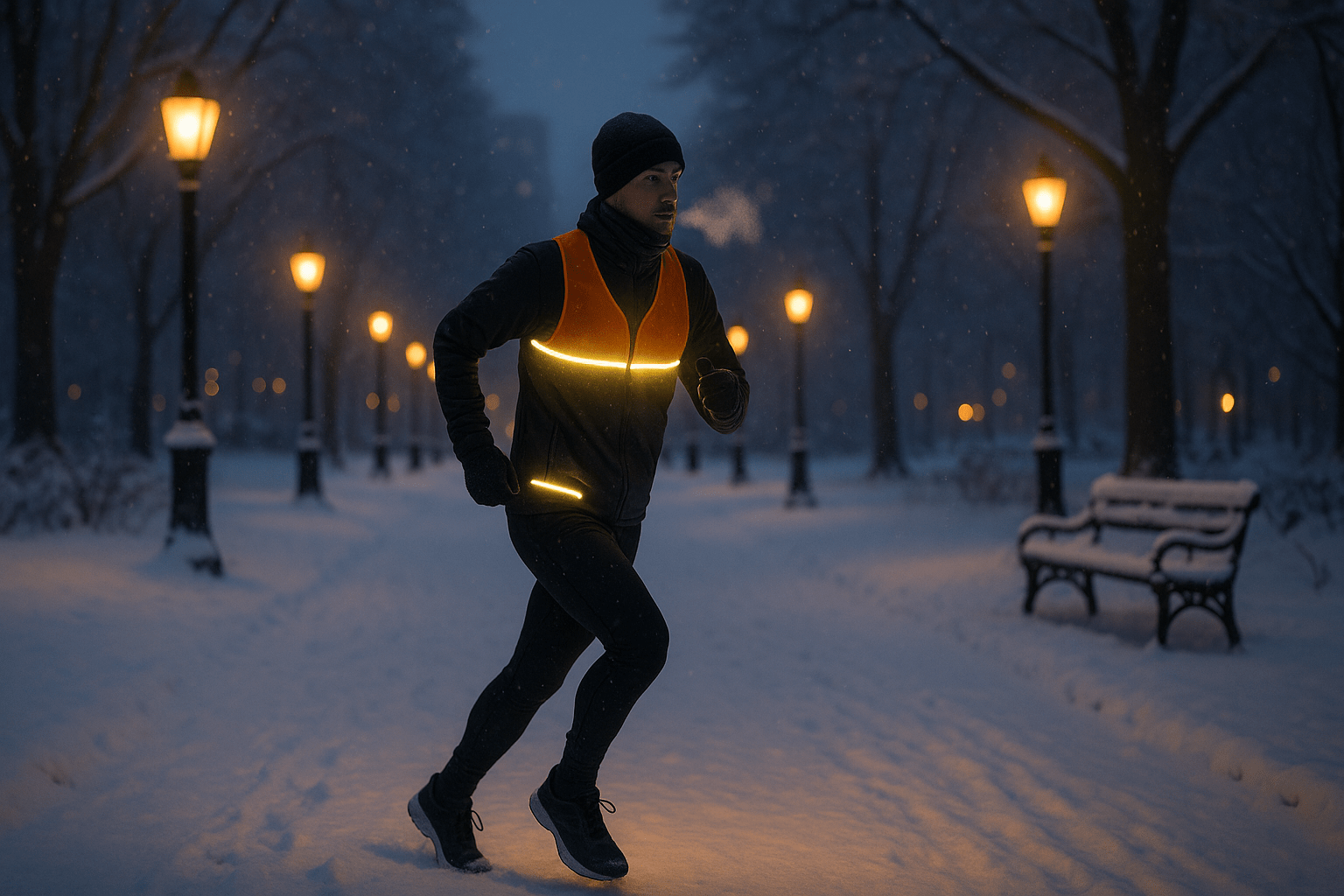Braving the Cold for the Love of the Run
You step outside and the cold hits you like a quiet wave. Your breath is visible, your muscles are tight, and the world feels frozen in place. Most people are still curled up in bed, but you? You’re about to lace up and run.
That first frosty step is always the hardest. But with the right approach, winter running doesn’t just become bearable—it becomes deeply rewarding.
Staying warm and safe while running in cold weather isn’t about pushing through recklessly. It’s about being smart, intentional, and prepared. Let’s dive into how you can thrive—not just survive—on your winter runs.
Why Running in Winter Can Be Tough (But Worth It)
The Physical and Mental Challenge
Let’s be real: cold weather running is hard. Your muscles take longer to warm up. Your face stings. Motivation dips with the sun at 4 PM. And let’s not forget slippery roads and biting winds.
But those obstacles? They’re exactly what make winter running so satisfying. Every frosty mile builds grit. Each early morning push strengthens your resolve.
The Hidden Benefits
Running in cold weather can actually improve your performance. Your body works harder to maintain warmth, which means more calories burned and cardiovascular gains.
And the mental edge? It’s priceless. While others retreat to the couch, you’re out there showing up. It’s empowering.
The Golden Rule of Staying Warm: Layer Smart
The 3-Layer System Explained
Mastering your layering strategy is the secret to comfortable winter runs:
- Base Layer (Moisture Control): Start with a thin, sweat-wicking layer like merino wool or polyester. It keeps sweat off your skin to prevent chill.
- Middle Layer (Insulation): Think lightweight fleece or synthetic down. This traps heat without bulk.
- Outer Layer (Weather Protection): A windproof and water-resistant shell shields you from the elements while staying breathable.
Best Materials to Use (And What to Avoid)
Use:
- Merino wool (warm, moisture-wicking, odor-resistant)
- Technical synthetics (polyester, nylon blends)
- Breathable shells with wind/water resistance
Avoid:
- Cotton (holds moisture, gets heavy)
- Thick, non-breathable layers (overheat risk)
Layering helps regulate your temperature as your body heats up—and it gives you options to adjust mid-run if needed.
Essential Gear for Cold-Weather Running
Protecting Your Extremities
Cold loves the edges of your body. Prioritize these:
- Gloves or mittens: Mittens are warmer, but thin touchscreen gloves offer dexterity
- Thermal socks: Wool blends work best to retain heat even if damp
- Beanies or headbands: Trap heat without overheating
- Neck gaiters or balaclavas: Protect face, neck, and lungs from icy air
Footwear and Traction
- Winter running shoes: Slightly insulated, often water-resistant
- Grip accessories: Yaktrax, microspikes, or trail shoes with deep lugs
- Waterproof spray: Helps keep shoes drier in slush
Visibility in the Dark
With shorter days, chances are you’ll be running in the dark.
- Reflective gear: Jackets, armbands, vests
- Headlamp or clip-on lights: Improve both visibility and being seen
- Bright/neon layers: Easier to spot on foggy or snowy roads
Staying Safe on Snow, Ice, and Dark Roads
Know the Conditions Before You Go
Always check:
- Temperature + wind chill (affects frostbite risk)
- Surface conditions (snow, ice, slush)
- Sunrise/sunset times (avoid getting caught in darkness)
Apps like Weather Underground, AccuWeather, or Windy can help you prepare.
Adjusting Your Pace and Stride
Your usual pace may not apply. That’s okay.
- Take shorter, more controlled strides to avoid slips
- Focus on stability over speed
- Choose well-lit, salted, or familiar routes when possible
Winter running is not the time to chase PRs—it’s about consistency and safety.
Warming Up, Cooling Down, and Hydrating
Indoor Warm-Ups That Matter
You’re more injury-prone in the cold. Start with:
- Dynamic lunges
- High knees
- Arm swings
- Jumping jacks
Get your blood flowing and raise your core temp before stepping outside.
Why Cool Downs Still Count (Even in the Cold)
After your run, your body cools rapidly. Don’t skip:
- Static stretching (indoors)
- Foam rolling
- Quick change into dry clothes
Cool downs prevent stiffness and speed up recovery.
Hydration Doesn’t Take a Winter Break
You may not feel sweaty, but cold air is dry. Breathing alone can dehydrate you.
- Drink water pre- and post-run
- Add electrolytes if you’re running longer than an hour
- Herbal teas or warm water can help rehydrate without chilling you
Courage in the Cold — Why You’ll Thank Yourself
Winter runners are built differently. You’ve chosen resilience over comfort, discipline over excuses. You don’t wait for the perfect conditions—you become the kind of person who thrives regardless.
With the right gear, the right mindset, and a healthy respect for the elements, running in winter becomes less about survival—and more about growth.
So layer up. Grab your gloves. Hit the road. And when you finish that run, when your cheeks are rosy and your heart is full, you’ll remember why it was all worth it.






Leave a Reply